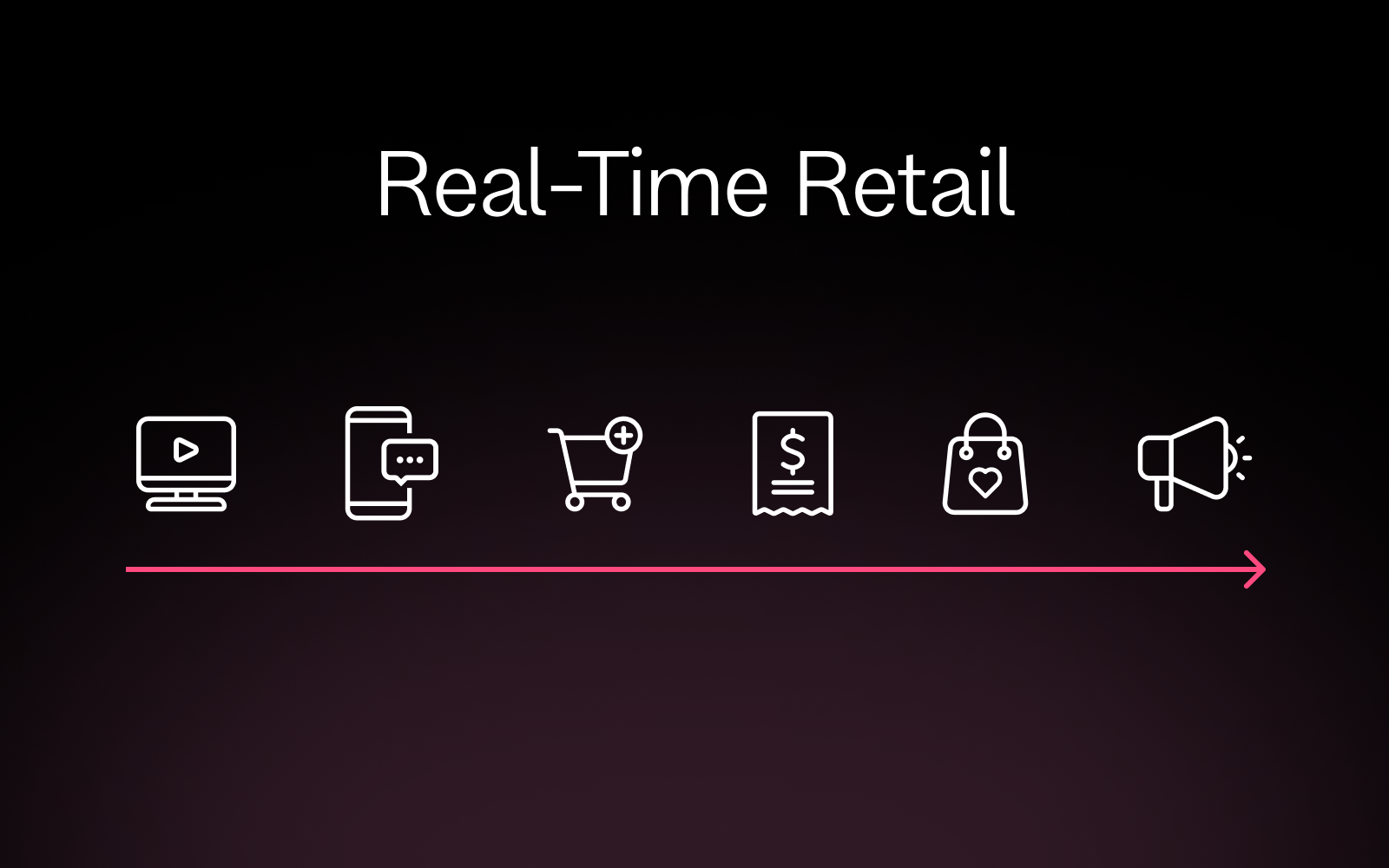Why Near Real-Time Matters in the Fast-Paced Retail World


In the world of retail, digital pivot points have shifted the balance of power to the consumer. Today’s shoppers have the ability to access the entire world at their fingertips, anytime and virtually anywhere. This unprecedented consumer access has disrupted traditional retail operations, placing tremendous pressure on supply chains that were never designed to handle such dynamic, global competition.
The time between the Wright brothers taking flight in North Carolina and Apollo 11 successfully landing on the surface of the moon was just 66 years. The pace of change and technological evolution has only accelerated since then, and this acceleration is nowhere more apparent than in digital technology.
Smartphones like Apple’s iPhone feel as if they have been ubiquitous forever, but the reality is that the iPhone is still in its teenage years, having made its debut in June 2007. The iPhone was truly the first device that put the power of digital technology into any consumer’s hands. Prior to the iPhone, it was primarily corporate-strength devices, specifically the BlackBerry, that put a supercomputer within people’s reach.
To survive in this new landscape, retailers must transform their approach to supply chain management. Success now depends on three important capabilities: comprehensive visibility into every stage of the retail process, access to reliable real-time data across all operations and the agility to make faster, more informed decisions that can keep pace with consumer expectations.
The Challenge with Legacy Systems
Meeting these expectations poses a challenge in large part because systems currently in place today were not built or developed with this pace of business in mind. Enterprise systems such as ERP, CRM, POS, WMS and TMS were designed to solve specific problems within the value chain, often creating data silos that lock down the information and events they specifically handle. As the industry evolved, these systems began looking to share pieces of information with other related systems, first through rudimentary batch methods and eventually attempting to do so closer to real-time. While this represents an improvement for retailers as they have a better view of what’s happening within their networks, the truth remains that with a mix of legacy and modern solutions, retailers are still susceptible to dangerous blind spots. The challenge persists: which events in the value chain drive what activities and behaviors?
A new approach is needed to solve this problem. Modern architecture has the potential to unlock greater visibility into key events along the entire value chain. By being able to overlay key systems and “see” events as they happen in real-time, retailers can progress toward greater visibility of crucial milestone events. While the idea of full end-to-end visibility remains a long-term goal (and some may argue it’s still a fantasy) the ability to identify and capture key events will empower retailers to better keep pace with their increasingly digital consumers.
Consider the path to purchase as an example. McKinsey outlines seven distinct steps in this journey, and within each step are numerous unique touchpoints. Recent research also finds that over 90% of consumers now start their path to purchase digitally, and from that point forward, the number of digital touchpoints continues to multiply, both online and in-store. Retailers need to see these touchpoints as opportunities to capture invaluable insights through event data.
When a consumer adds items to their cart but doesn’t complete the transaction, what triggered this decision? Was it after reading negative reviews or discovering unexpected shipping costs?
Understanding the specific sequence of events can help retailers address these friction points. Similarly, in-store interactions provide crucial data points. Did the customer interact with a store associate who wasn’t able to address their needs? When the associate searched the inventory system, were they unable to find the requested item? These events are nuggets of insight that can drive meaningful improvements in the customer experience.
An Event-Native Solution Can Solve Complex Problems for Modern Retail
This is where Kurrent’s event-native data platform becomes transformational for retailers. Kurrent provides an event-native data platform that feeds real-time, business-critical data with historical context in fine-grained streams from origination to destination, enhancing data analytics and AI outcomes. Kurrent’s event sourcing is excellent for retail operations because using an immutable log of data creates a single source of truth that makes auditing a much more streamlined process. This means every customer interaction, inventory change and transaction is captured as an immutable event, creating a complete audit trail.
Unlike traditional batch processing systems, Kurrent enables retailers to process and react to events as they happen, which is crucial for modern retail operations where customer expectations demand immediate responses. The platform’s core database allows retail customers to store data in streams of immutable events and react in near real-time through projections, while also enabling them to build systems with great performance and high availability.
Building the Foundation for Next-Generation Retail Operations
The world is digital, and now is the time for retailers to adopt a new approach to capturing and utilizing digital events to better serve their customers. Today’s consumers expect fast and effective access to goods and services, which means retailers must have the appropriate technology tools to meet these expectations. Event-native platforms like Kurrent represent the next evolution in retail technology infrastructure, moving beyond the limitations of traditional, siloed systems to create a unified, real-time view of the entire customer journey and retail operation. By embracing this new reality, retailers can finally bridge the gap between consumer expectations and operational capabilities, turning every digital interaction into an opportunity for insight, improvement and competitive advantage.
